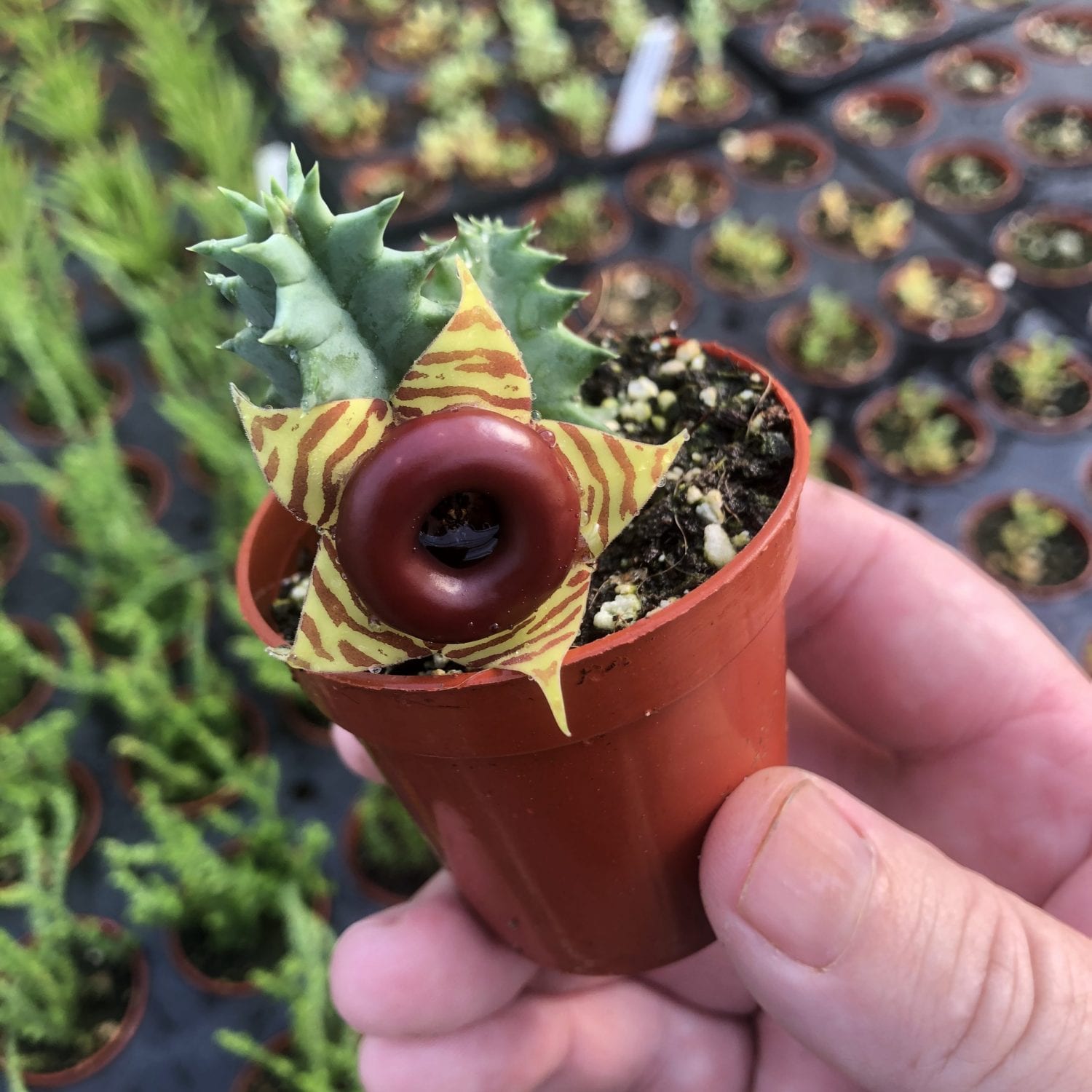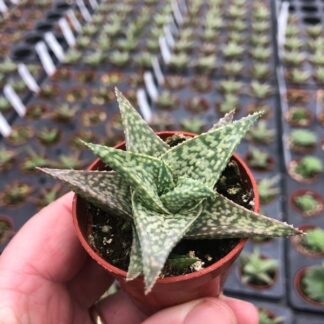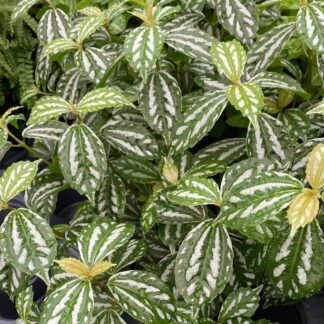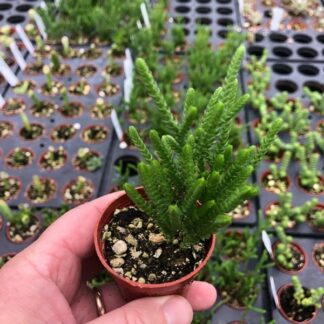Description
🌵 Lifesaver Cactus (Huernia zebrina) Care Guide
🌟 Overview
- Nickname: Lifesaver Cactus / Lifesaver Plant
- Not a true cactus – it’s a succulent from the milkweed family (Asclepiadaceae)
- Native to: South Africa
- Famous for: Star-shaped flowers with a glossy, red “lifesaver†ring in the center
🔠What Makes It Special
- â Unique Flowers: Deep red blooms with a bright yellow center—look like candy
- 🌿 Compact Growth: Grows in clusters of angular, green stems
- 🪴 Great for: Hanging baskets, rock gardens, small pots
- ðŸ Attracts Flies (mild scent helps with pollination)
✅ Basic Care
â˜€ï¸ Light
- Loves bright, indirect light
- A little morning sun is okay
- Avoid harsh afternoon sun
ðŸŒ¡ï¸ Temperature
- Thrives between 60–80°F (15–27°C)
- Not frost-tolerant – bring indoors if below 50°F (10°C)
🪴 Pot & Soil
- Use shallow pots with drainage holes
- Soil: Well-draining cactus mix (or mix potting soil + sand/perlite)
💧 Watering
- Water only when soil is 100% dry
- Spring–Summer: about every 2 weeks
- Fall–Winter: once a month or less
- Use the “soak and dry” method
🌱 Fertilizing
- Optional: Diluted cactus fertilizer once a month in spring/summer
- Don’t over-fertilize—it can stop flowering
âœ‚ï¸ Maintenance
🔄 Repotting
- Every 2–3 years or when it outgrows its pot
- Use fresh, dry soil
âœ‚ï¸ Pruning
- Remove dead or shriveled stems to keep it tidy
🌿 Propagation
- Cut a healthy stem with a clean knife
- Let it dry and callous for 1–2 days
- Plant in dry cactus soil
- Water lightly until rooted
🛠Pests & Problems
- Watch for mealybugs and spider mites
- Treat with insecticidal soap or neem oil
- Avoid overwatering—main cause of root rot
🌼 Blooming Info
🕒 How Often?
- Usually once or twice a year (late summer–fall)
- May take a year or two to bloom the first time
🪄 How to Encourage Blooms:
- Lots of bright light
- Don’t overwater or over-fertilize
- Cool, dry rest in winter helps trigger flowers
🧠Fun Extras
🌿 Design Ideas:
- Pair with other succulents like Echeveria or Sedum
- Let it trail in a hanging basket
- Great in rock gardens or small indoor pots
🎠Benefits:
- Eye-catching flowers
- Super easy to care for
- Great for small spaces
- Fun for kids or beginners learning about succulents
â“ Is It Rare?
- Not rare, but definitely unique
- Widely available in garden centers and online
- Affordable and easy to find




